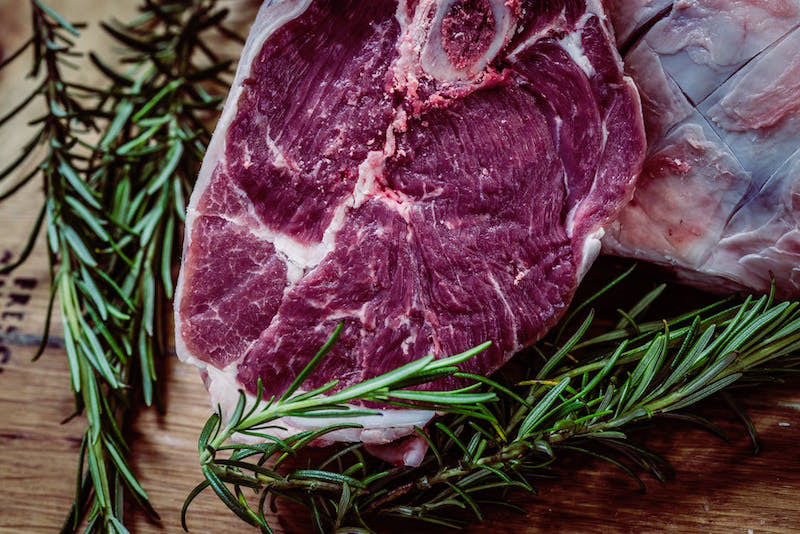Fibro Fix Blog — weight loss

Circadian Rhythms and Melatonin Go Hand-in-Hand 0
Melatonin’s effect on the suprachiasmatic nuclei can help entrain circadian rhythms and decreased melatonin production reflects the circadian system.- David Brady
- Tags: circadian rhythms melatonin sleep weight loss

Balanced Foods for Balanced Bodies 2
There is no one-size fits all diet. Some people thrive on high-fat, low-carbohydrate diets, while others feel best fueling themselves with plant foods. Whether we fall into the low-carb, vegetarian, Paleo, or “everything in moderation” camp, one thing that benefits people in all the disparate diet camps is whole foods. That is, foods that are unprocessed, unrefined, and replete with their naturally-occurring nutrients.
- David Brady
- Tags: balanced foods dairy free diet gluten free high fat low carb nutrition paleo paleo diet plant foods vegan weight loss whole foods

Bowel Function and Regularity – Part 2 0
In this part, we’ll move to the other end of the spectrum, to constipation. According to the National Institutes of Health, constipation implies fewer than three bowel movements per week.- David Brady
- Tags: constipation diarrhea diet fiber functional medicine gluten free health nutrition stomach issues weight loss

A TRANS FAT THAT’S GOOD FOR YOU? 0
If you follow health and nutrition news, no doubt you’ve heard of trans fats, and no doubt you know you generally want to stay away from them. Trans fats are created when oils that are normally liquid at room temperature (like soybean or canola oils) undergo complex chemical processing that results in them being solid or semi-solid, such as in margarines and vegetable shortening. You can recognize trans fats in ingredient lists by the words “partially hydrogenated.” Any oil that has been partially hydrogenated contains trans fats. And even if a food label claims it has “zero grams trans fat per serving,” it’s still important to read the ingredients list, because under the current U.S. labeling laws, manufacturers are permitted to claim a product has “zero” grams of something if it contains less than 0.5 grams per serving. So there are many processed foods that do contain trans fats, but the labels are deceptive, because the serving sizes are typically very small. (Meaning that when you eat a more reasonable portion, you could be ingesting several grams of trans fat without even knowing it.)
Trans fats are found in many common processed foods, including crackers, cookies, supermarket bakery cakes and quick breads, cake frosting, and peanut butter. They’re used in these products because the partially hydrogenated oils have a longer shelf life than the liquid oils they start out as, and also because they were intended to replace saturated fats, which are naturally solid at room temperature, but which for decades were believed to be linked to heart disease and obesity.
You can train your palate to recognize these fats because they have a different “mouthfeel” from the natural saturated fats. Margarine doesn’t melt in your mouth the same way real butter does; peanut butter that contains partially hydrogenated oils coats the roof of your mouth with a kind of “waxy” texture that is absent from peanut butter with no added oils.
And just as they don’t feel and taste the same as natural saturated fats, they don’t act the same way in your body. Decades of research have shown that consuming trans fats can have a detrimental effect on cardiovascular health by negatively influencing levels of LDL and HDL. Because of the way they interfere with normal cell signaling, they are also associated with poorer body composition and difficulty losing body fat.
With much recent research exonerating the saturated fats you were likely cautioned to limit for many years, you may see a move away from trans fats and a return to the use of more traditional fats, like butter and coconut oil, in processed foods. And this is a great thing, but let’s not throw the baby out with the bathwater. Not alltrans fats are to be avoided. In fact, there’s a natural trans fat that is associated with many positive health outcomes.
This good trans fat is called conjugated linoleic acid (CLA), and it’s found mostly in the fat and dairy products of ruminant animals (cows, goats, sheep, bison). CLA content is highest when these animals consume their natural diets—grass, silage, and hay—rather than the grains they’re fed in industrial feedlots. Feedlot animals still produce a little bit of CLA, but there’s much more in the fat from grass-fed animals.
CLA may help support body fat loss and maintenance of a healthy body composition. Some studies looking at CLA supplementation have shown it to be beneficial even without changes in diet and lifestyle, but in the absence of those modifications, CLA might help to an extent, but it won’t be a “magic bullet” for weight loss. It’s also been shown to promote a healthy inflammatory response and support normal cell signaling. Because of its role in contributing to proper cell function, it may also aid inhealthy insulin signaling.
With the near-disappearance of CLA from our modern food supply, and the potential positive impact CLA has on whole-body health, consider seeking out meat and dairy products from grass-fed and pastured animals. You can often find these from local producers at nearby farmers’ markets. If you don’t have access to these, consider supplementing with a high-quality CLA product.
- David Brady
- Tags: CLA dairy grass-fed health meat nutrition trans fat weight loss wellness and prevention
